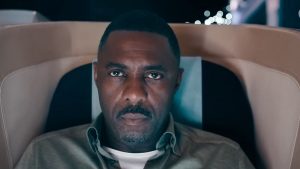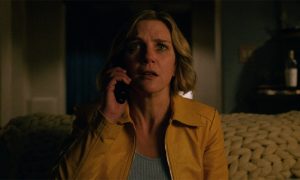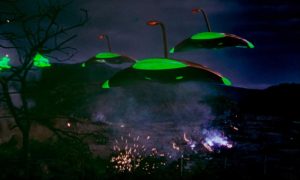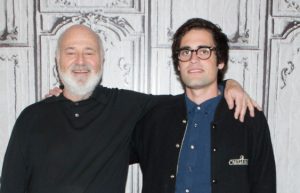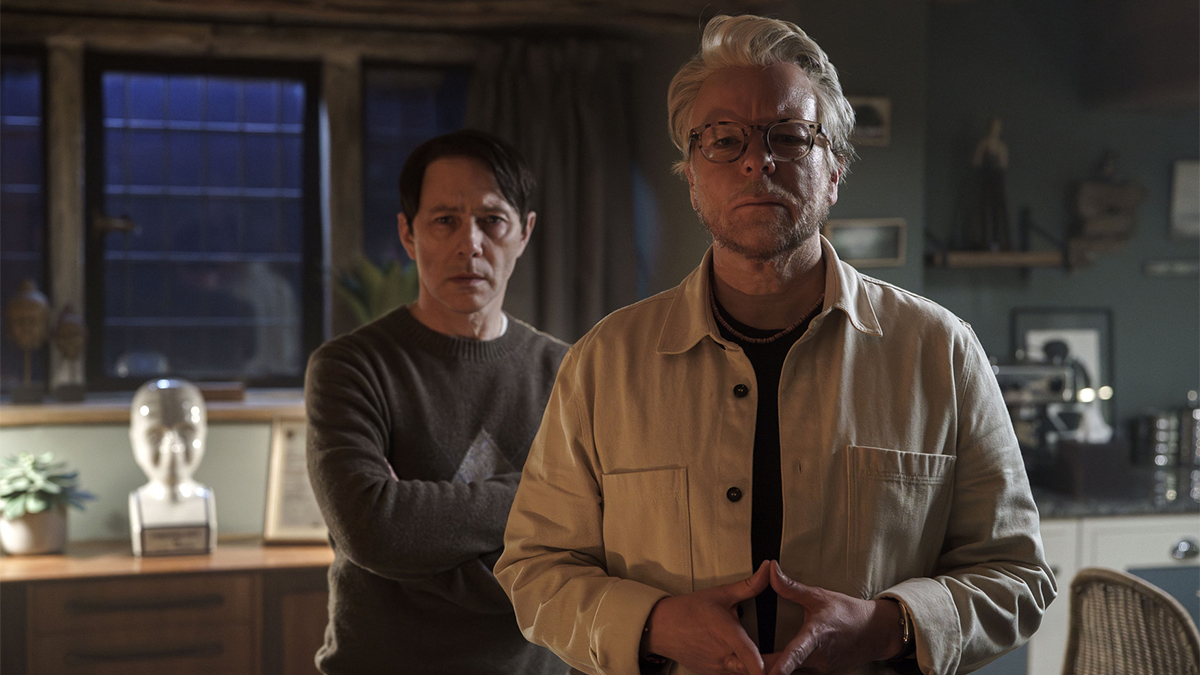
Warning: this Inside No. 9 review contains spoilers.
After all this time, another first. Having blasted through the guest star budget on last week’s stunning five-star opener, “The Trolley Problem” is Inside No. 9’s sole story to feature only Steve Pemberton and Reece Shearsmith on screen. (Bernie Clifton’s Dressing Room and, technically, The Stakeout, each had one other character).
A two-hander powered by tension, it was a performance showcase for the creators, and would make an impressive calling card – as if one were needed at this stage – to any casting directors watching. Straight drama? No problem. Intense, emotional showdown? Watch us go. These two could slot in to any primetime or hit streaming show and act rings around everybody else, no question. Ideally though, they’d have a stronger script to perform than this one.
The action took place in a remote country home, against the driving rain of a noisily dramatic storm. Therapist Blake Chambers (Pemberton) had played the good Samaritan and scooped up apparently suicidal stranger Drew (Shearsmith) from a bridge on the side of the road. In Blake’s kitchen, the suspicion and power shifted from one to the other and back again, until eventually, everybody was a victim.
The hook of wondering who these characters really were and what they were hiding pulled you through a first watch. The guessing game of who was caught in whose trap was fun to play – even if fun was absent from the rest of this grim story.
The script didn’t wear its learning lightly. The Bystander Effect, Laughter Yoga, the Szondi Test and the titular thought experiment were all namechecked and explained at length. As a result, the dialogue felt contrived, like a list of topics for dinner party conversation rather than the words of real-feeling characters in a dangerous situation. Blake’s (Mc)Cambridge diploma being on display had established him as preening and so explained his tendency to lecture, but when Drew slipped into the same mode, it felt less like a character choice and more like a weakness.
Once we’d learned that Drew had carefully planned the encounter to get revenge on Blake, the former therapist who’d taken sexual advantage of Drew’s vulnerable daughter Ellie and failed to raise the alarm when she took a fatal overdose, the logic faults started to appear.
Taking into account his unhinged state of mind, Drew’s actions still lacked plausibility. Would these two men conceivably never have met in the aftermath of Ellie’s death? How likely is Drew’s sick strategy as his first attempt at revenge? If Blake – who had taken out a court restraining order on Ellie – had been captured on CCTV leaving her hotel room on the night she died, it would be a police matter. Why hadn’t Drew gone through official channels to have him struck off? And why give passing mention to Ellie’s mother, only to prompt viewers to wonder what her role might be in all of this?
Once this track of thinking starts, it’s hard to stop it. Drew was estranged from Ellie but not estranged enough that he didn’t closely observe her mood and give her money (that she accepted and dutifully used) for a therapist. Blake’s son Robbie was shy, but he was supposed to have been out that night with friends. Robbie was buried in a box underground but had a clear mobile phone signal. Unlike the whos, hows and whys left after “Boo to a Goose”, these questions are all down to story, not Inside No. 9’s concentrated runtime. Given more screen minutes, they couldn’t have been resolved.
It also comes down to tone. “The Trolley Problem” is set in the real world, not the theatrical and heightened, Sleuth-like ones of “The Riddle of the Sphinx” and “Misdirection”, where similarly baroque revenge schemes pass scrutiny and implausibility melts away given the context. Yes, there’s a Gothic storm raging outside and director Al Campbell (hello, Screenwipe’s Barry Shitpeas) kept the lights atmospherically low, but we’re in a middle-class kitchen, not the historical rooms of a mannered Oxbridge don, or the studio of a hammy stage magician.
Shearsmith’s emotional performance here is straight drama, not slanted or comedic; if we believe in his character’s grief – and I did – then it’s jarring to pair that with Drew’s outrageous horror movie plan. The convincing shame that Pemberton injected into Blake while forced to listen to that recording of his session with Ellie didn’t fit with his smug villainy when planning Drew’s demise later on. None of it matched. It’s unusual for performance to outstrip story, but that’s what happened in “The Trolley Problem”. It was packed with ingredients that didn’t coalesce.
Still, that nasty final shot of Drew burning to death reflected in Blake’s glasses? A beauty. It’d make a terrific poster.
Inside No. 9 series 9 continues on Wednesday May 23 with “Mulberry Close”.
The post Inside No. 9 Series 9 Episode 2 Review: The Trolley Problem appeared first on Den of Geek.





